See yourself as a writer.
It could make all the difference.

By KELLIE
Research suggests that the most effective teachers of writing are those who see themselves as writers. But how do teachers really feel about writing and how does it impact on students?
“Do you see yourself as a reader?”. Recently a group of about 100 primary classroom teachers and I were considering this question and you probably won’t be surprised to know that the response was collective enthusiasm. Almost everyone in the room excitedly raised their hand (you know the same way your students do when you ask who wants to go to lunch early!).
We talked about why we thought it was so important for teachers to be readers. Everyone was really keen to respond and there were many thoughtful and heartfelt responses that will be familiar to you:
- When our students see us reading, they are more likely to read themselves.
- If I love reading, then my students will love reading.
- Teachers are role models. The kids copy what they know we like.
Teachers know the potential they have to influence their students’ perceptions of what is valued in the classroom.
Almost everybody in the room also agreed that they read for the love of it. Even though some teachers clarified this was when they had the time to read, the general consensus was that most people enjoyed reading. Not only that, the group concluded that this love for reading influenced the way reading was taught in their classrooms and was an important part of learning to read.
Reading for pleasure is generally considered a core component of teaching reading in a classroom.
Probably best of all, many teachers felt the ‘reading for enjoyment’ classroom routine was actually having a positive effect on their students’ reading progress. This makes sense, doesn’t it? If we can inspire our students to enjoy reading, they read more, so they become better at it, enjoy it more and therefore read more.
You could just feel the energy in the room for the topic of reading, and everyone enjoyed sharing their experiences and reflections of how and why they influence their students as readers, and lovers of reading (and rightly so!).
However, the question “Do you see yourself as a writer?” resulted in an audible groan across the room. There were so many reasons why the teachers felt this way about writing, and teaching writing, but the most common responses included (again, these may sound familiar!):
- Writing is time consuming. There’s never enough time to teach it properly.
- Most kids I know hate writing. They are disinterested and don’t care about it.
- Teaching writing is hard.
- I never learned how to teach writing. I just don’t know how.
Actually, a majority of the teachers bravely admitted that they felt inadequately prepared to teach writing, or were just not “good at it”. Some teachers also said that they do their best even though they don’t always get the results they expect.
They are not alone. Teaching writing is complicated. Current research indicates that many teachers leave university feeling under-prepared to teach writing (Wyatt-Smith & Jackson, 2016). The recently released Policy Brief “Australian Writing Survey: Building an evidence base” (Wyatt-Smith and Jackson, 2020) suggests that across all the years of schooling, less than 50% of teachers felt prepared for teaching writing. The statistics were similar for teachers’ perceptions of how prepared they are to assess writing, which is not surprising.
On top of this, we are constantly bombarded with ‘right ways’ and ‘best ways’ to teach writing, and a change is introduced every now and again (usually supported by commercial products and short-lived, stand-alone professional development) which often leaves us feeling even more confused.
It’s not that much of a stretch then to say that if so many teachers are not confident, feel unprepared and are confused, then of course this is going to affect how we feel towards teaching writing.
Aaugh.
Charlie Brown.
Not surprisingly, only about 10 teachers of the group said they wrote for the love of it. Of this small group, one wrote poetry, another short stories and a few kept a journal of some sort. There were lots of “I used to when…” and “If I had time…” responses heard from around the room.
Writing for pleasure as a part of the teaching routine was limited to three classes. Thankfully though many teachers indicated they try to include more enjoyable writing activities when their classes are not focused on assessment (IF there’s time).
In contrast to what had been agreed upon with regard to reading, writing for pleasure was not considered an essential part of regular writing instruction
We know teachers are a powerful influence on their students’ perceptions of what’s valued and valuable, so we have to ask ourselves: If we, as teachers, don’t love writing, why should our students?
I may be biased but, there is just so much to love about writing! From the words we select, to the patterns and rhythms we create, to the finished texts that fill us with a sense of pride and accomplishment. (Admit it, you know how good it feels!).
If we are truly seeking to improve our students’ attitudes towards writing, and ultimately improve their writing outcomes, we have to start by thinking about our own mindsets, and begin to see ourselves as writers, so that our students see us this way too. Even if it means ‘fake it til we make it’!
We can also be pretty confident in thinking that if our students enjoy writing, they will write more, so the better they will get at it, and want to write more… you know that old cycle of success chestnut?
Hopefully, we inspire the same sense of joy we have for reading towards writing when we learn to love writing, and see ourselves as writers.
So, what can you do if this sounds familiar?
Simply start by being aware of how much time you spend writing during the course of the day (at school, home and in-between).
- Be mindful of what you are writing and the reasons why you write.
- Be aware of how often your students see you writing, and what feelings you are conveying when you write (especially unintentionally).
- Pay attention to the conversations you have about teaching writing with your colleagues. Really listen to how they talk about writing too.
- Look for evidence of how your school values writing, and writing success. Is it overt and tangible? Would a visitor to your school (or classroom) know writing is valued?
Commit to doing this for a few weeks, maybe even keep notes in your diary, look for emerging patterns and really get to know ‘yourself as a writer’.
Enjoy!
References:
Jones, S., Hughes, H., Huston, B., Chemlak, S. & Wall, H. (2018) “To teach writing it helps to see yourself as a writer.” ajc.com/blog/get-schooled.
Wyatt-Smith, C., & Jackson, C. (2016). Australian Writing Survey (AWS©). Brisbane, Australia: Institute for Learning Sciences and Teacher Education. Australian Catholic University
Wyatt-Smith, C., & Jackson, C. (February, 2020). “Australian Writing Survey:Building an evidence base. Policy Brief. Part One.” acu.edu.au.
